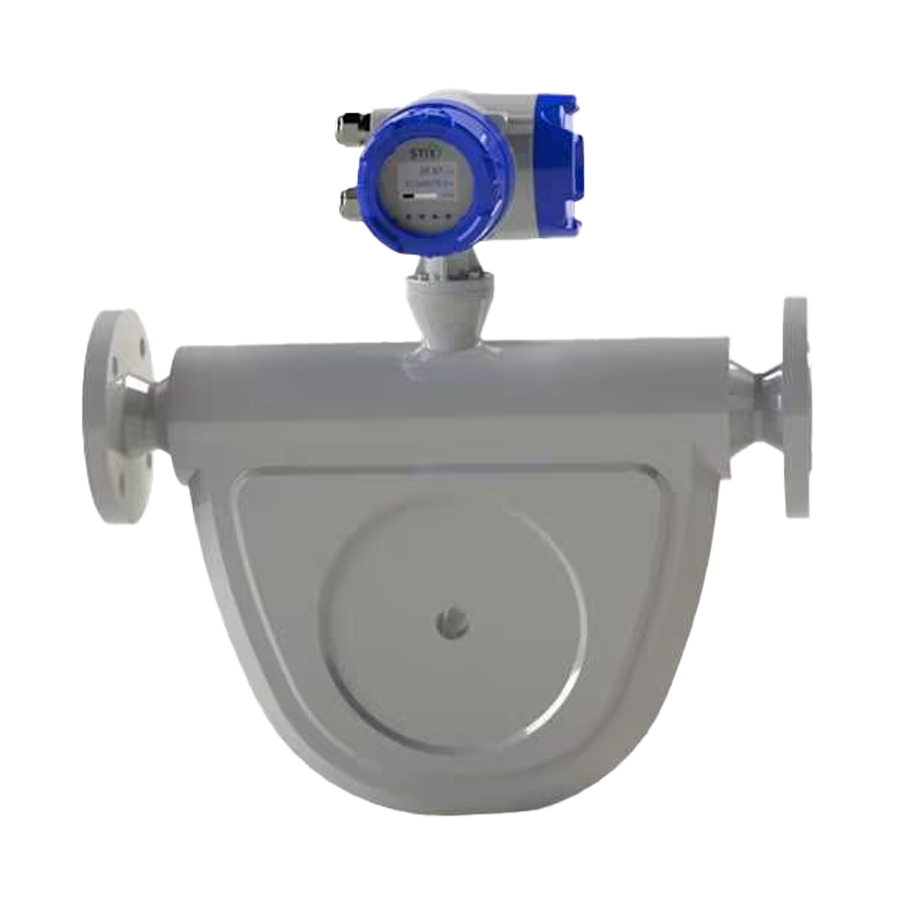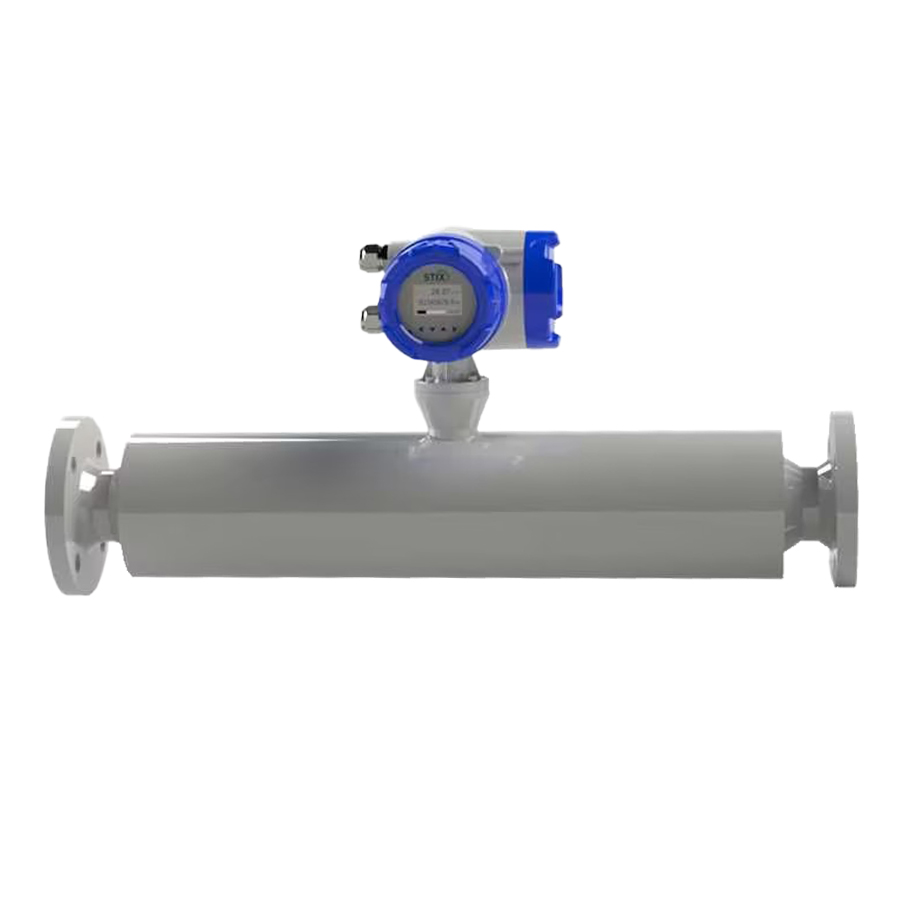Coriolis mass
flowmeter
A Coriolis flowmeter, also known as a Coriolis mass flowmeter, measures the mass of a flowing medium directly and independently of viscosity, density and conductivity. The flow rate, density, temperature, viscosity and volume flow can be measured simultaneously. Coriolis flowmeters are very accurate. They can be used under difficult conditions such as high pressure or high temperature. Coriolis flow meters are used in the chemical, food, oil and gas industries.

FEATURES
How does a Coriolis
mass flowmeter work?
ATTRIBUTES
- DN10 to DN150
- Flow range 300-3000 kg/h: (Flow range - application 5-50 kg/min)
- Accuracy: 0,2 %
- Output: 4-20 mA / pulse / RS485
- Power supply: DC24V
- Optional Tri- Clamp connection
Inside the meter are one or more curved tubes. These are set into vibration. When a medium flows through the tubes, the mass of the medium counteracts the vibration and causes a measurable rotational movement (torsion). The strength of this rotational movement is proportional to the mass of the flowing medium. Sensors detect the phase shift and the mass flow rate is calculated.
Direct mass measurement: Independent of pressure, temperature and viscosity of the medium.
Additional measurements: Density and temperature can be measured simultaneously with the mass flow rate and the volume flow rate.
High accuracy: Coriolis flowmeters provide a very accurate measurement of flow, independent of the properties of the medium such as density, viscosity or temperature.
Versatility: Coriolis flow meters can be used for a wide range of media including liquids, gases and vapours.
Low pressure drop: Compared to other flowmeters, Coriolis flowmeters cause little pressure loss, resulting in efficient and cost-effective measurement.
IN OUR PORTFOLIO

Flowmeters available from stock:
EsuMass® – Coriolis flowmeter
EsuMass® – Food/sanitary version with Tri-Clamp-Connection

